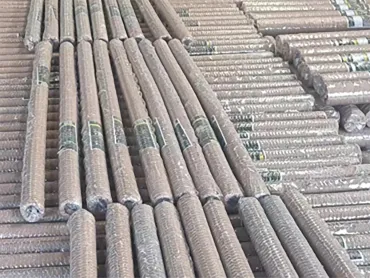Αυγ . 12, 2024 09:12 Back to list
Effective Uses and Benefits of Military Barbed Wire Fencing in Security and Defense Applications
The Role of Military Barbed Wire Fences in Defense Strategies
In the realm of military defense, barbed wire fences have served as a crucial element in securing perimeters, controlling movement, and enhancing overall battlefield tactics. These seemingly simple barriers have significant implications for national security and military operations. To understand their importance, one must explore their construction, deployment, and impact on military strategies throughout history.
Historical Context and Construction
The use of barbed wire dates back to the late 19th century, primarily to protect farmland and livestock. However, its application in military contexts became prominent during World War I. Soldiers quickly recognized that barbed wire could create an impenetrable barrier against enemy advances. Military barbed wire is typically heavier and more durable than standard fencing wire, designed to withstand harsh environmental conditions and intentional tampering.
The construction of these fences involves twisted strands of wire with sharp barbs that can deter and injure anyone attempting to breach them. Deploying military barbed wire fences is often strategically timed—set up during preparation for a possible attack or as part of a defense mechanism during conflict. As opposed to traditional fencing, military barbed wire is installed rapidly, allowing troops to establish fortified positions with minimal delay.
Strategic Deployment
Military barbed wire fences are commonly utilized in various scenarios, including frontline defense, border security, and the protection of critical installations. When used on the battlefield, these fences create a physical and psychological barrier that slows down enemy forces, providing valuable time for troops to regroup and counteract any enemy advances.
military barbed wire fence

In modern warfare, where asymmetric threats and guerrilla tactics are prevalent, military barbed wire has been adapted for various operational needs. It can be used in temporary installations or as a permanent fixture, depending on the situation's demands. For instance, deployment along borders has become increasingly common to prevent unauthorized crossings and to maintain national sovereignty. Such barriers can significantly impede infiltration by foreign adversaries or unauthorized migrants, contributing to a nation's broader defense strategy.
Impact on Military Operations
The presence of barbed wire fences often influences enemy tactics and can lead to a shift in battlefield dynamics. Armed forces may reconsider direct assaults if confronted with barriers that pose substantial risk. This creates opportunities for defenders to employ other strategies, such as counter-offensives or tactical withdrawals.
Moreover, military barbed wire serves as a signal of intention. The mere presence of these fences can communicate to potential aggressors that a region is fortified and prepared to defend against incursion. This psychological factor is often overlooked but plays a significant role in deterrence.
Conclusion
In summary, military barbed wire fences represent a critical aspect of defense strategies in contemporary warfare. Their construction, strategic deployment, and deterrent effects highlight their multifaceted role in military operations. As technology continues to evolve, so too does the application of barriers like barbed wire, which remain a fundamental component in safeguarding national interests. Understanding their historical significance and contemporary relevance can provide deeper insights into the ever-evolving nature of military defense and security.
-
Weather Resistance Properties of Quality Roofing Nails
NewsAug.01,2025
-
How Galvanised Iron Mesh Resists Corrosion in Harsh Environments
NewsAug.01,2025
-
Creative Landscaping Uses for PVC Coated Wire Mesh Panels
NewsAug.01,2025
-
Common Wire Nail Dimensions and Their Specific Applications
NewsAug.01,2025
-
Choosing the Right Welded Wire Sheets for Agricultural Fencing
NewsAug.01,2025
-
Anti - Climbing Features of Razor Wire Barriers
NewsAug.01,2025









